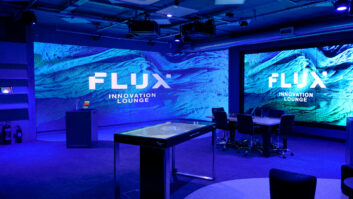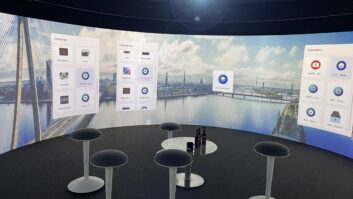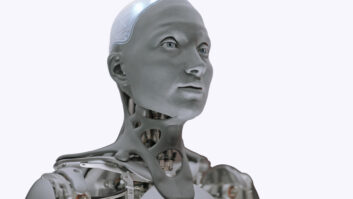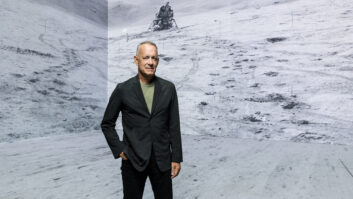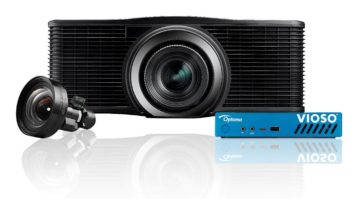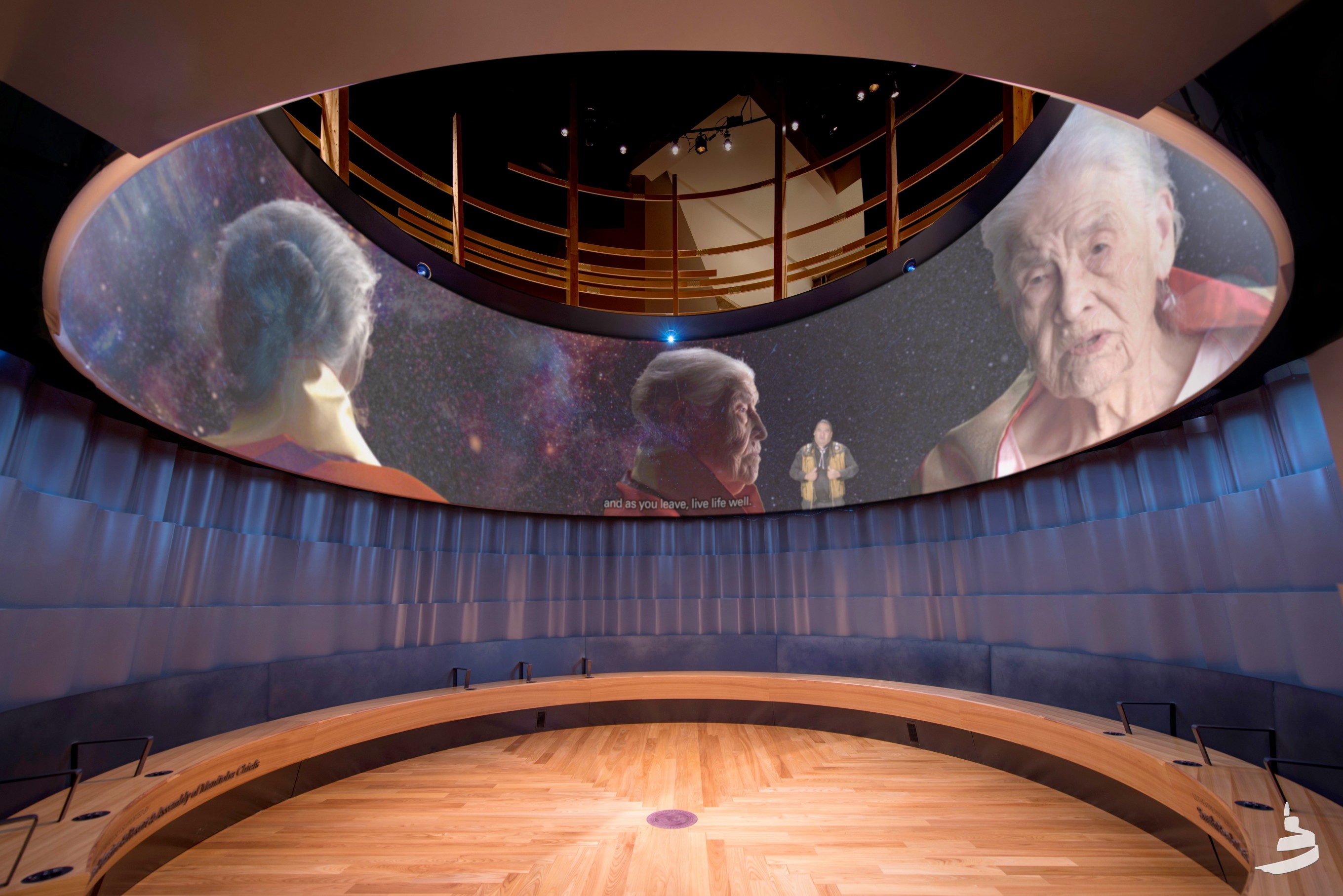
The first national museum to be built in Canada for nearly half a century combines striking design with the latest in AV technology to get its message across, writes James Christopher.
Winnipeg’s striking new Canadian Museum for Human Rights explores the universal concept of human rights with a special emphasis on Canada. Its intention is to engage visitors in an immersive, interactive experience that offers both the inspiration and tools to make a difference in the lives of others.
Electrosonic was contracted to handle the audiovisual design of the museum’s 11 galleries, and subsequently the company directed the AV equipment installation working with local partner Advance Pro. The museum features theatres, interactive touchscreen stations, projections on a digital canvas and hundreds of video clips.
The project posed a number of challenges due to the building’s architectural profile, which was designed by US architect Antoine Predock, working with Winnipeg’s Architecture 49. Designed to move visitors onwards and upwards through space, the museum includes alabaster ramps and stone-clad bridges criss-crossing a 170ft atrium.
Theatres
Theatres are scattered throughout the museum. The first one that visitors encounter is in the gallery defining human rights. The open-air theatre format, with bench seating, features a three-projector edge blend on scrim; sculptures behind the scrim form part of the story. Three Barco HDX-W20 FLEX projectors are ceiling mounted; a Dataton WATCHOUT system handles edge blending.
The Indigenous Perspectives gallery has a 360º theatre where visitors watch a video about First Nations’ concepts of rights and responsibilities to each other and the land. It’s outfitted with six Barco CNWU-61B projectors, with a seventh available for special presentations. Another WATCHOUT system performs the edge blend.
The gallery devoted to Canadian Journeys has a single-projector theatre with a Barco CNWU-61B unit plus a two-story digital canvas featuring two walls of screen prints and a third wall of imagery displayed by four Panasonic PT-DS20KU projectors.
Another gallery, with a short-throw projector, delivers content about protecting rights in Canada. A single-screen theatre in the Examining the Holocaust gallery, with a Barco CNWU-61B projector, has walls comprised of plate glass shards symbolising the Nazis’ infamous Kristallnacht. A second theatre, presenting a film that marks the Ukrainian Holodomor famine-genocide, has a similar setup. Four projectors combine to display an elevated 80ft projection-wall backdrop in the gallery.
A media installation in the Rights Today gallery features three Barco CNWU-61Bs projecting onto the wall surface; edge blending is performed by a TVOne system.
Numerous AV displays and interactive stations, many of them 27in Elo touchscreens, deliver content and engage visitors as they make their way through the galleries. To ensure that all museum guests have full access to the interactives, Electrosonic collaborated closely with the museum team to build custom universal keypads easily reachable by people with disabilities.
Fifteen AV niches are featured in Canadian Journeys; the displays have, in various configurations, embedded Samsung and NEC monitors, and Viewsonic and Barco projectors.
The gallery exploring the Universal Declaration of Human Rights has four interactive stations, each with two portrait-mounted 55in Samsung monitors and Microsoft Kinect gesture recognition technology. A digital study table comprises 12 MultiTouch 55in touchscreens mounted face up, side-by-side; it is operated via Tactable software.
Actions Count, a gallery targetted to young visitors, features gesture recognition in a game. This one features three Barco CNWU-61B projectors shooting down onto three tables.
Sound challenges
Electrosonic worked closely with SH Acoustics on the audio elements of the project. This architecturally challenging museum deploys Brown Innovations compact linear speaker arrays and 2D focusing ceiling arrays, Renkus-Heinz speakers and Tannoy bookshelf speakers to enhance the immersive feeling in the theatres. In the Examining the Holocaust and Breaking the Silence theatres, custom-shaped Innovox speakers embedded in the bench seating are used. The long, shallow speakers fire sound to the people sitting in the row behind and are time-delayed to combine with the front speakers to localise sound to the screen.
The 360º Indigenous Perspectives theatre, with benches around the perimeter for viewing the screens and a central area for guest artists to perform in, proved to be a particular challenge. Instead of firing sound across the room, Tannoy speakers were placed behind the screens aimed down at the audience. To keep the space ‘wide and exciting’, a fabricated and undulating wooden wall creates perfect diffusion in the circular room and offers another ‘visually unique’ design element. Compact power pipe subwoofers from James Loudspeaker were placed under the bench seating.
Biamp AudiaFLEX CMs were the main audio processors used in the museum.
Medialon Manager provides centralised monitoring and control of most of the equipment. An Electrosonic service contract provides for two on-site technicians.
www.advance-pro.com
www.architecture49.com
www.barco.com
www.biamp.com
www.brightsign.biz
www.browninnovations.com
www.chiefmfg.com
www.dataton.com
www.electrosonic.com
www.elotouch.co.uk
www.innovoxaudio.com
www.jamesloudspeaker.com
www.medialon.com
www.nec-display-solutions.com
www.panasonic.com
www.peerless-av.com
www.qsc.com
www.renkus-heinz.com
www.samsung.com
www.shacoustics.com
www.tannoy.com
www.tvone.com
www.viewsonic.com

